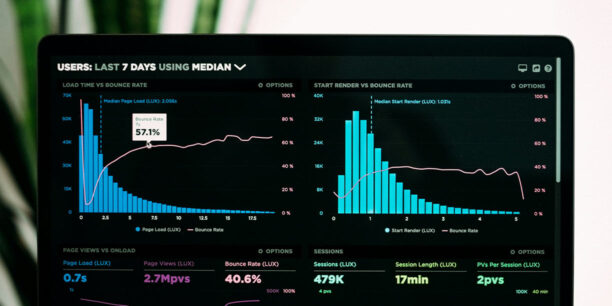Mastering the Art of Nonprofit Budgeting: Key Principles & Best Practices

All nonprofits require money to operate. Without the hard work of determining cash flow and capital allocation, charitable missions are only ideas. An effective budget can ensure your organization operates efficiently.
One way to look at it is that a nonprofit budget is the planning document used to track your expenses and revenue. Put another way: it determines where you’ll dedicate your resources based on priorities.
But not all nonprofit budgets are equal. There are different types of budgets intended for specific purposes, departments, or focused periods. Use this as a guide to ensure your financial activities contribute to your organization’s financial sustainability and long-term impact.
What Are the Benefits of Using a Nonprofit Budget?
A thorough budget is part of any nonprofit’s business plan. When you take the time to organize a clear and consistent financial plan that aligns with your timely goals, there are clear benefits. These are just a few of the most obvious reasons to create a budget for your nonprofit organization.
- Achieve your mission: An effective nonprofit budget keeps you focused on the right things. The more resources you dedicate to a particular goal, the more likely you’ll achieve them.
- Grow without overspending: A budget allows you to grow sustainably without the risk of outpacing your income. Running a charity without a clear budget is like driving at night without your lights on—you don’t know where you’re going, increasing the risk of a sudden crash.
- Communicate better: A good budget improves internal nonprofit transparency by facilitating healthy conversations around your group’s finances. Budget planning helps support staff alignment and ensures your nonprofit board members know what’s happening.
- Keep donors happy: A potential donor doesn’t want to give to a wasteful organization. They want to make sure you spend your funds wisely and that their contributions make an impact. Put simply, having a clear financial plan builds trust with your funders.
Keep these benefits at the forefront of your mind as you create your next budget. These might also be helpful reminders for your team if they need motivation to participate in the budget planning process. The more buy-in you get from your team, the better the process will unfold.
A clear budgeting process also helps to improve other areas of your organization, including your nonprofit accounting system and your management of nonprofit audits.
4 Types of Budgets for Nonprofit Organizations
Budgets all revolve around money, but different budgets serve different purposes. Here are four of the most common types of budgets used by nonprofit organizations.
- Operating budget: This is one of the most common types of nonprofit budgets, and it displays your annual projected revenue and operating expenses. You’ll most likely start with a proposed budget, then track actual spending during the fiscal year.
- Capital budget: This budget consists of the financial numbers directly associated with long-term projects, like a building campaign.
- Program or project budget: This report provides an overview of revenue and expenses for a specific project. You can also create these program budgets for individual departments, like fundraising or marketing.
- Cash flow projection: This budget has projections that answer the question of how much money you have in the bank at any given time. Organizations often lean on these projections to forecast the in-and-out flow of money.
Whether you select one of these budgets or use a combination, understanding how each is unique is the first step.
Budgeting Approaches: 3 Types to Consider
Besides the different types of budgets, there are also fundamental approaches to strategic budgeting. These are the philosophies behind how an organization views money. You can apply each to the various types of budgets.
- Zero-based budget: This approach involves starting from scratch at the beginning of the fiscal year to determine your priorities and how you should spend the money based on those goals.
- Income-based budget: This approach allows you to predict your income, then back into the expenses you can afford from that amount. It’s easier when you have a clear idea of what your upcoming revenue will be.
- Incremental budget: This approach involves building a budget using a percentage increase or decrease based on the previous year’s budget. It’s based on what you already know works and takes far less time to build than starting from scratch.
There’s no “right” approach to organizational budgeting—you must find the one that works best for you. The most important thing is to stay consistent once you select one. Otherwise, you won’t be able to accurately compare budgets from period to period.
Nonprofit Budget Features: Look for These 5 Things
We looked at a few organizational budgets, each with variances and different elements. Still, many of them had several similar features. These are a few of the most common terms you’ll see showing up on budgets.
- Revenue: This is the money coming into your organization. For most nonprofits, these sources of revenue refer to fundraising efforts from donations, sponsors, and grants for nonprofits. It can also mean membership fees and fundraising event ticket sales.
- Expenses: This refers to the things you spent money on, which is a wide range of direct costs that most commonly include staff salaries, travel, nonprofit marketing, program expenses, office space and supplies, and professional development.
- Projections vs. actual: This answers the question: “What did you expect compared to what happened?” Projections are a crucial part of the budgeting process, and you’ll want to see how close your estimated expenditures were to the actual results.
- Time period: This ensures your budget includes the same period for comparison purposes—whether you track the most recent quarter or a three- or five-year overview. But make sure to at least maintain an annual budget that looks at the most recent fiscal year.
- Goals: This answers the question: “What revenue numbers are you trying to hit?” Keep your organizational goals at the forefront to remember what your goal is and what metrics to measure to understand how to get there.
Best Practices for Creating a Nonprofit Budget
Now that we’ve covered why you need a budget and what one looks like let’s unpack a few best practices for optimizing your budget as a nonprofit leader. You’ll learn from and improve on this process through time and effort, but hopefully, these tips save you some time and potentially costly mistakes.
- Involve the right people: Get your staff, volunteers, and board of directors’ input into the budgeting creation and review process to ensure buy-in.
- Align with your goals: Ensure your budget is worth your time by creating one that helps you achieve your goals. Your nonprofit’s budget should directly support your organizational goals and strategic plan.
- Keep it accurate and updated: Create sustainable processes that help you track the accuracy of these numbers. An inaccurate or outdated budget will give you faulty information, detracting from proper financial management.
- Don’t drown in the details: Keep most budget reports high-level to avoid getting stuck in the weeds. Your financial team will care about the nitty-gritty, but your board will likely want an overview.
- Choose the right budgeting tool: Pick a budgeting software that’s helpful and not overly complicated. Automating some of these processes with technology will help your organization grow sustainably and keep the numbers accurate. This could be as simple as starting with Excel or moving to software like QuickBooks or FreshBooks. These tools will often have nonprofit budgeting templates to help you get started.
Get Ready to Budget Better
Budgeting is a crucial part of keeping your organization on track and solvent. Without a budget, you won’t meet your objectives or mission. This financial management is the way to improve the overall financial health of your nonprofit—even if it isn’t easy, it’s worth heeding to keep your organization alive and thriving.
Copy Editor: Ayanna Julien

Your Guide to Nonprofit Accounting
Subscribe to the Classy Blog
Get the latest fundraising tips, trends, and ideas in your inbox.
Thank you for subscribing
You signed up for emails from Classy
Request a demo
Learn how top nonprofits use Classy to power their fundraising.



